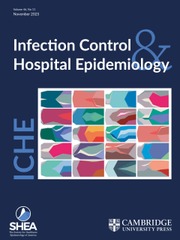Crossref Citations
This article has been cited by the following publications. This list is generated based on data provided by Crossref.
Weiss, Stanley H.
1997.
RISKS AND ISSUES FOR THE HEALTH CARE WORKER IN THE HUMAN IMMUNODEFICIENCY VIRUS ERA.
Medical Clinics of North America,
Vol. 81,
Issue. 2,
p.
555.

